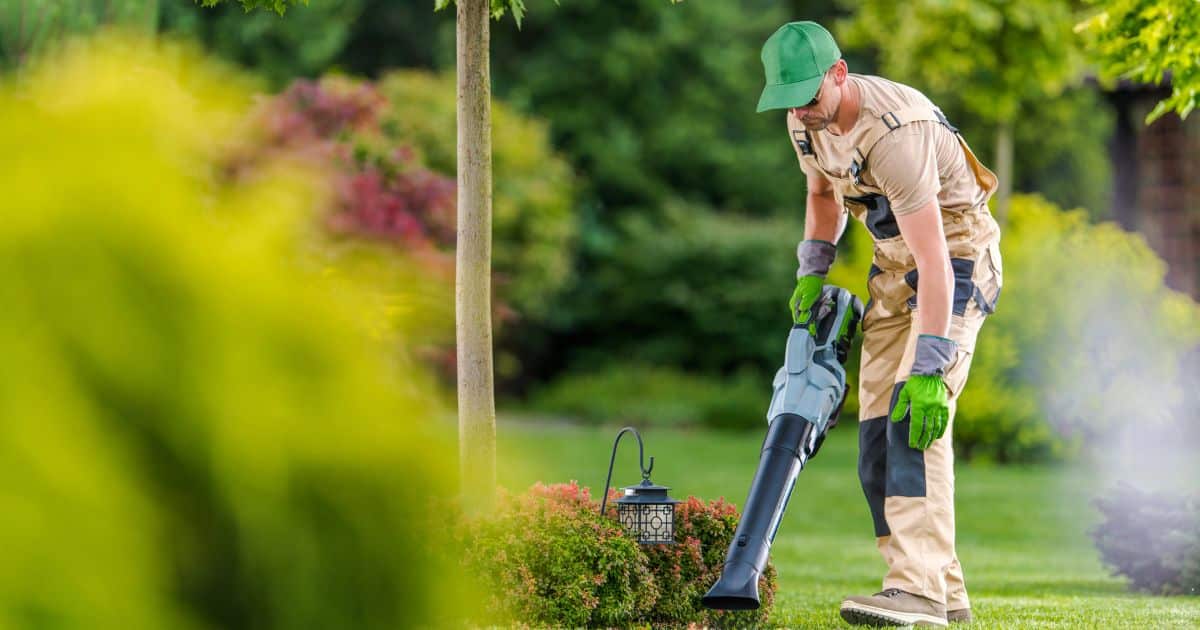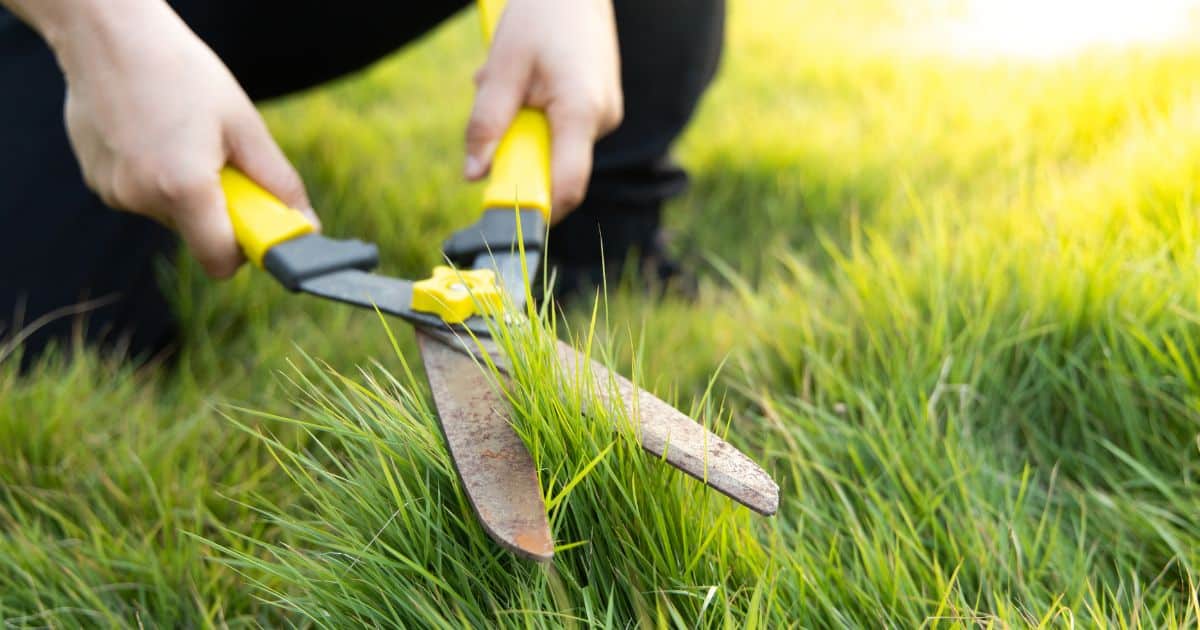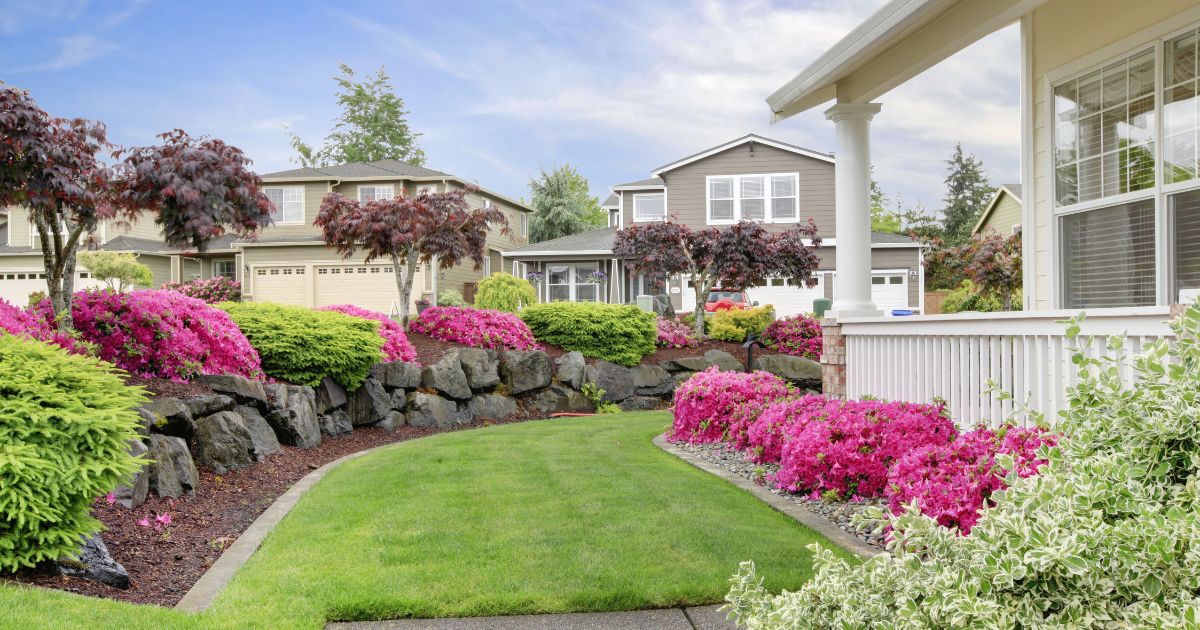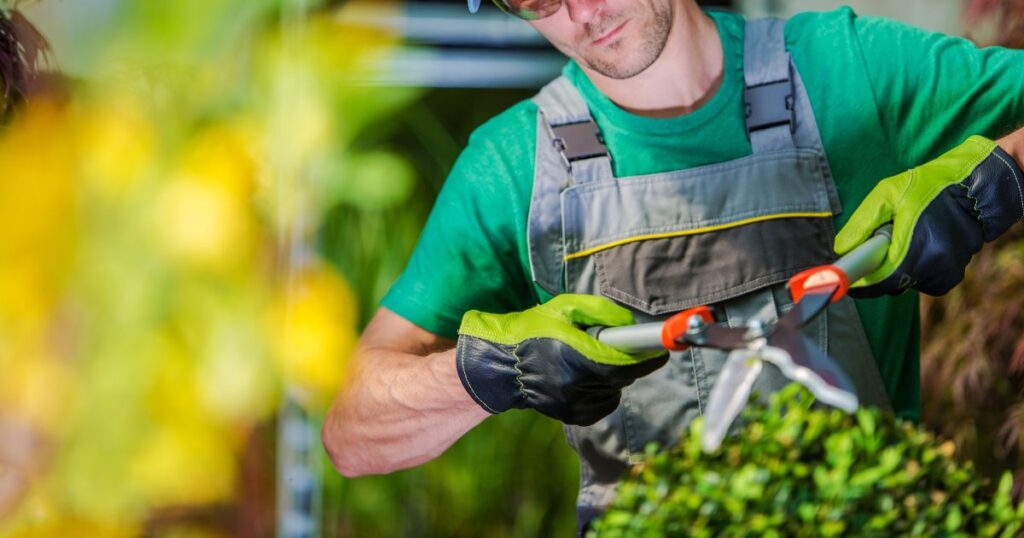
Prepare to embark on an adventure into the wild world of landscaping, where creativity and science collide to shape enchanting outdoor realms. Get ready to uncover the secrets behind the art of transforming mundane spaces into picturesque wonderlands that will make your heart skip a beat! From the delicate dance of flowers to the sturdy stones that lay the path, we’ve got all the delightful details that will have you itching to dig deeper into the captivating realm of landscaping. So grab your gardening tools, and let’s dive into a playful exploration of how to turn the ordinary into the extraordinary!
To be a good landscaper, hone your skills in design, horticulture, and project management. Continuously expand your knowledge of plants, landscaping techniques, and sustainable practices. Communicate effectively with clients, understand their vision, and deliver exceptional results that exceed their expectations.
Importance of Landscaping
The importance of landscaping cannot be overstated beyond its role in increasing aesthetic appeal and functionality in outdoor spaces.
A good landscape design can also provide several other benefits like stress relief by providing an area for restful contemplation; improved air quality by filtering pollutants with plants; better water management through proper bedding techniques; increased social interaction by creating areas where people can gather together outdoors. Moreover, beautiful landscaping can help raise property values since it has been proven that attractive landscapes increase overall desirability, which in turn leads to higher resale value for homes and businesses alike.
The Role of a Good Landscaper
Discovering how to be a good landscaper entails grasping the delicate balance between artistic finesse and scientific expertise in landscape design and maintenance. By immersing oneself in the intricacies of plants’ individual needs, such as their preferred light conditions (full sun or partial shade), soil composition, water requirements, and growth habits, one can cultivate a thriving outdoor environment. Merging these essential elements seamlessly empowers landscapers to craft captivating outdoor spaces that captivate the imagination and beckon visitors to explore further.
They also must be skilled in working with various tools like lawnmowers, hedge trimmers, and pruning shears while being able to incorporate hardscaping elements like patios or retaining walls. A good landscaper should not only have technical knowledge but also be creative and passionate about their work.
They should have an artistic eye for design and the ability to blend colors, textures, and shapes in a way that is aesthetically appealing. A good landscaper should be customer-focused by listening to client’s needs and preferences while offering suggestions based on their expertise to achieve the best possible outcome.
Understanding the basics of landscaping
Landscaping is the process of beautifying and enhancing the outdoor spaces around buildings. As a landscaper, it’s vital to have a solid grasp of the fundamentals to succeed in this line of work. In this section, we’ll cover three aspects that constitute the basics of landscaping: types of soil and their characteristics, plant selection and placement, and basic design principles.
Types of soil and their characteristics
Soil is an essential component when designing any landscape project. It is crucial to understand its different types and characteristics before planting anything. The three main types are sand, silt, and clay soils.
Sand is coarse-grained with large particles that don’t hold water well. Silt has medium-sized particles that retain some moisture but can become compacted easily.
Clay has small particles that create a dense structure in which water cannot penetrate easily. When assessing soil quality, assess drainage capacity, pH levels for optimal nutrient uptake by plants, fertility status for adequate growth rates, and mineral content to avoid deficiencies or toxicity issues for specific plant species.
Plant selection and placement
The essential aspect of successful landscaping projects is selecting the right plants for specific locations based on environmental factors like light exposure (sun or shade), soil type quality (clay-like or sandy), temperature range (cold or warm), and rainfall amounts (dry or wet). It’s imperative to consider plant height at maturity when placing them into designs so they won’t obstruct views from windows or grow too high over time requiring regular pruning maintenance sessions. When choosing plants for a specific location, consider aesthetics goals as well; do you want a formal-looking garden with neat rows/hedges versus informal setups with free-form layouts?
Basic design principles
Landscape design principles are general guidelines that help professionals create landscapes that are aesthetically pleasing while functional. Here are some critical design principles that every landscaper should know:
- Unity: It refers to the coherence of the landscape elements in a design.
- Balance: Balancing texture, color, and height creates a sense of visual equilibrium.
- Proportion: Plants should be proportionate to the size of the area they’re planted on.
- Rhythm: repetition of elements such as plant groupings create rhythm and patterns.
- Simplicity: A simple design that is easy to maintain is usually better than an overly complicated one.
Understanding the basics of landscaping outlines three critical aspects; soil type and quality, plant selection/placement, and basic design principles.
The right soil composition can provide plants with optimal growing conditions, while selecting plants with specific light exposure requirements will ensure they thrive from day one. Design principles like unity, balance, proportionality, rhythm patterns simplicity help you create effective landscaping projects that are both beautiful and functional for clients’ outdoor spaces.
RELATED: How to Find a Landscaper: Transform Your Outdoor Oasis
Tools and Equipment
Landscaping requires various tools and equipment to create a beautiful outdoor space. A good landscaper should have essential tools for landscaping that are of high quality, effective, and efficient.
These tools can range from hand-held tools to heavy-duty machinery. Each tool has its specific use in the landscaping process; hence, it’s crucial to know which tool is needed for each task.
Essential Tools for Landscaping
There are several essential tools for any landscaping project. The first is a pair of pruning shears or secateurs used for trimming shrubs and small branches.
Another important tool is a shovel, which assists in digging holes for planting trees and shrubs or removing soil from an area. A rake is another necessary tool used in leveling uneven surfaces or removing leaves and debris from the outdoor space.
A hoe, on the other hand, is used in preparing soil beds or removing weeds. Lawnmowers are also crucial in maintaining a healthy lawn by cutting grass at an appropriate height regularly.
Safety Measures When Using Equipment
While carrying out landscaping activities using various equipment and machinery, safety measures must be observed to prevent injuries to oneself or others. Always wear protective clothing such as goggles when working with power tools such as chainsaws or lawnmowers.
Be cautious when handling sharp gardening implements like pruning shears since they can cause deep cuts if not held correctly. Ensure that electrical equipment has been appropriately grounded before use and kept away from wet areas to avoid electrocution risks.
Always read manufacturer instructions before operating any equipment or machinery. Never leave any machine running unattended during operation hours.
Maintenance and Care for Tools
Proper care of landscaping tools ensures longevity while maintaining their effectiveness during operation hours. After use, clean the tools with water and mild soap, and dry them thoroughly before storage. Sharpen blades regularly to ensure effective use and avoid wear and tear.
Store all equipment in dry, ventilated areas to avoid rusting and damage. Inspect all tools before use; if any part is damaged or faulty, replace it immediately.
Investing in high-quality tools for landscaping is critical since they are essential in achieving beautiful outdoor spaces. Be sure to follow safety measures while using the equipment and maintain them properly to prolong their lifespan and functionality.

Planning the Landscape Project
Site Analysis and Assessment
Before starting any landscape project, it’s important to analyze and assess the site. This is crucial because it helps you determine what types of plants and materials will work best in a particular setting. Some of the things to consider during a site analysis include:
- Soil type: The type of soil on your site can affect plant growth and drainage. Different plants thrive in different soil types, so understanding your soil is essential for selecting appropriate plants.
- Sun exposure: Plants have different light requirements, so you need to understand how much sun exposure your site receives throughout the day. This information will help you choose plants that will thrive in specific areas of your landscape.
- Water drainage: Proper drainage is essential for maintaining healthy landscapes. Knowing how water moves through your site can help you avoid poorly drained areas that could damage plant life.
Budgeting and Cost Estimation
One of the most crucial aspects of planning a landscape project is budgeting. Before beginning any work, it’s important to determine an accurate cost estimate for the entire project, including materials and labor costs.
During budget estimation, there are several factors to consider, such as:
- Plant selection: The cost of plants varies significantly depending on their size, species, and location from where they are being sourced.
- Hardscape elements: Materials used for hardscaping, such as pavers or bricks, also come at varying prices depending on the quality & quantity required.
- Labor costs: Costs associated with hiring workers or landscapers should be considered while budgeting
It’s vital for any landscaper looking forward to succeeding in their endeavor to have an accurate budget estimate. This helps ensure that all aspects of the project remain within expected limits, even if unexpected expenses arise.
Timeline Development
Developing a timeline is essential when planning landscaping projects. Creating a timeline helps ensure that each stage of the project is completed on time and the project is completed within the expected duration.
When developing a timeline, there are several important factors to consider: – Planting seasons: Some plants thrive better when planted during specific seasons.
Therefore, it’s important to work with planting schedules suitable for different species. – Project size: Larger projects may require more time than smaller projects.
A good landscaper must estimate accurately how much time each stage will take. – Climate: Weather conditions can significantly affect the duration of a landscaping project.
For instance, periods of heavy rain or high winds may delay completion time. With an accurate timeline in place, it becomes easier to manage resources and ensure that everything stays on track throughout the entire landscape project.
The Implementation of the Landscape Project
Prep Work Before Installation
Before beginning to install a landscape project, it is crucial to perform enough prep work. One of the most important things to do is to ensure the area is clear of any debris or obstacles. This will make it easier for you to carry out your project without having anything in your way.
Clearing the area also gives you an opportunity to level the ground if necessary. Another important aspect of prep work is selecting and sourcing all materials needed for installation.
Depending on what type of landscaping project you are working on, different materials may be required, such as soil, mulch, plants, hardscaping materials like rocks or pavers, and more. Ensure these materials are high quality and will last long-term.
It’s important to consider any potential hazards that may exist in the area, such as utility lines or water pipes. It’s essential to identify these hazards before starting as they could cause not only costly damage but also injury or harm if disturbed during installation.
Installation Process (Planting, Hardscaping, etc.)
Once prep work has been completed successfully, it’s time to move on to the installation process, which involves planting and hardscaping, among other things depending on what type of landscaping project you have taken up. Planting involves selecting plants that thrive in specific weather conditions and soil types. Ensure that plants are planted correctly at appropriate depths with sufficient space between them, which gives them enough space for their roots system well-developed properly.
Hardscaping involves building structures like retaining walls or pathways using stone masonry techniques. When installing hardscaping features, make sure that they are properly aligned and leveled with each other using a spirit-level tool.
It’s worth noting that proper installation maximizes plant growth while minimizing weed growth. As part of the installation process, it’s also essential to consider proper drainage systems to avoid waterlogging in certain areas of your landscape design.
Maintenance After Installation
Once the landscaping project has been installed, it is essential to conduct regular maintenance checks. This will ensure plants are growing healthily and hardscape structures remain structurally sound over time.
Maintenance after installation includes watering and fertilizing plants regularly and pruning and shaping them correctly as needed. It’s also important to consider adding mulch or compost around the base of plants which provides them with the nutrients they need for long-term growth.
For hardscaping features like pathways or retaining walls, ensure regular checks are carried out to identify any cracks or damage that may have occurred over time. If any issues arise, be sure to address them promptly before they become major structural issues requiring costly repairs.
A successful landscape project is one that involves good prep work before installation alongside proper planting and hardscaping techniques. Regular maintenance checks after installation are equally crucial for ensuring it remains healthy and vibrant for years to come.

Maintaining the Landscape
Maintaining a beautiful and healthy landscape requires more than just planting flowers and trees. Regular maintenance is necessary to keep your landscaping looking its best. Here are some tips for maintaining your landscape.
Watering Techniques
Watering your landscape is essential to keep it healthy and thriving. However, it’s important to do it right.
Overwatering can cause root rot while underwatering can lead to dry and unhealthy plants. The best time of day to water your plants is in the early morning before the sun gets too hot.
This allows the water to soak into the soil without evaporating too quickly. Be sure to water deeply so that the roots get plenty of hydration.
It’s also a good idea to use a drip irrigation system or soaker hose rather than a sprinkler system. This allows you to control where the water goes and prevents waste.
RELATED: Unearthing the Truth: How Much Should a Landscaper Charge Per Hour
Prune Plants as Needed
Pruning is an essential part of maintaining healthy plants in your landscaped area. It involves removing dead or damaged branches, shaping trees for better growth patterns, promoting airflow within trees, and much more. When pruning, be sure to use sharp tools and make clean cuts at an angle just above a bud or lateral branch.
Don’t cut too close or leave stubs behind, as this can invite diseases into the plant. It’s also important not to prune too much off at once; 25% of the plant at one time is usually a good rule of thumb so as not to stress out your plant excessively.
Fertilizing Techniques
Fertilizing provides necessary nutrients that may not be present in the soil for plant growth. You can determine if additional nutrients are needed by checking soil pH levels as well as by observing leaf coloration changes (yellowing) which indicate nutrient deficiencies. You can use either organic or chemical fertilizers, depending on your preference and needs.
Organic fertilizers can include manure, compost, or fish emulsion. These types of fertilizers are slower to release nutrients into the soil but are less toxic and better for the long-term health of the landscape.
Chemical fertilizers offer a quicker release of nutrients but can also burn plant roots if not used correctly so be sure to read instructions carefully. They also have a tendency to leach away with rain and watering, so it is advisable to apply them in smaller doses over time rather than all at once.
Maintaining your landscape is essential for keeping it looking healthy and beautiful year-round. By following good watering techniques, pruning as needed, and utilizing fertilizing techniques appropriately, you can ensure that your landscape stays healthy for years to come!
Client Communication Skills
Listening to Client Needs
One of the most important skills a landscaper can have is the ability to listen to their clients’ needs. When starting a new project, it’s crucial to ask questions and get a complete understanding of what the client wants.
This includes gathering information about their lifestyle, preferences, and budget. It’s also important to listen carefully to their feedback throughout the project.
Clients may change their minds or want something added or removed from the original plan. A good landscaper will be attentive and make sure they understand these changes before proceeding.
Communicating with Clients
Effective communication is key to any successful project, and landscaping is no exception. As a landscaper, it’s your responsibility to communicate clearly and effectively with your clients at every stage of the project.
This includes providing regular updates on progress and any changes made along the way. It’s also important to explain any technical terms or concepts that may be unfamiliar to your client.
Email is an effective way of communicating with clients when it comes to updates on projects. You can send photos or videos of progress work alongside updates on plans for each day’s work so that they are not caught off guard by sudden changes.
Managing Client Expectations
Another essential skill for a landscaper is managing client expectations. It’s not uncommon for clients to have unrealistic expectations when it comes to what can be achieved within their budget or time frame.
A good landscaper will be honest about what can realistically be achieved within these constraints while still delivering a high-quality result that meets their client’s needs. It’s crucial not only to manage expectations but also set them right at the beginning of each project by providing accurate timelines, budgets as well as realistic outcomes for certain areas in order not to cause disappointment later down the line when things fail due to unrealistic expectations set at the start of the project.
Creating a Lasting Relationship with Customers
A good landscaper will create a lasting relationship with their customers by being responsive to their needs even after the completion of projects by providing care tips, offers for follow-up services, and any other related information. This will ensure that clients are happy with the work done and that they can be called upon in case there are future projects requiring similar expertise. Customer satisfaction is key to success in any business, therefore, as a good landscaper, it is important to establish a lasting relationship with their customers.
The Importance of Putting Yourself in Your Client’s Shoes
To be an expert landscaper, you need to have empathy for your clients. You need to be able to put yourself in their shoes and understand what they want from you. It’s essential always to remember that every client has unique needs and requirements when it comes to landscaping.
So, take time before starting each project to understand what your client wants. By doing this, you’re more likely to deliver results that go beyond their expectations which can lead to repeat business in the future.
Frequently Asked Questions
What are the good qualities of a landscaper?
The good qualities of a landscaper include creativity, attention to detail, a strong work ethic, effective communication skills, adaptability, and a passion for nature and design.
What is the most important thing in landscaping?
The most important thing in landscaping is achieving a harmonious balance between the natural and built elements, creating a visually appealing and functional outdoor space that meets the client’s needs while considering environmental sustainability.
What are the important benefits of landscaping?
Important benefits of landscaping include enhancing the aesthetic appeal of a property, improving air quality, reducing soil erosion, providing habitat for wildlife, creating outdoor recreational areas, and increasing property value.
What are the effects of the landscape?
The effects of a well-designed landscape can include improved mood and well-being, increased property marketability, enhanced community aesthetics, and the promotion of biodiversity and ecological balance.
What are the challenges of the landscape?
Challenges in landscaping can include dealing with unpredictable weather conditions, managing time and resources efficiently, adapting to different site conditions, addressing client preferences and budget constraints, and staying updated with industry trends and technologies.
What are the primary landscape examples?
Primary landscape examples can include gardens, parks, residential yards, commercial landscapes, urban plazas, public squares, waterfronts, and natural preserves.
Conclusion
Landscaping is a profession that requires a lot of attention to detail, creativity, and hard work. Being a good landscaper involves understanding the basics of landscaping, knowing how to use tools and equipment, planning your projects well, and maintaining landscapes in top condition.
In this article, we have discussed the essential steps to becoming a good landscaper. We began by defining landscaping and discussing its importance. Next, we talked about the basics of landscaping, including soil types, plant selection and placement, and basic design principles.
We also covered the essential tools required for landscaping as well as the communication skills needed to manage clients effectively. In addition to these topics, we also delved into project planning, from site analysis to cost estimation.
We talked about implementation steps like prep work before the installation process, such as planting or hardscaping. We discussed maintenance tasks like watering techniques and fertilizing methods.
The Importance of Being A Good Landscaper In Today’s World
A beautiful landscape can positively impact an environment in numerous ways. It improves air quality by filtering pollutants from our atmosphere; it creates habitats for birds and other animals, which help with pollination; it reduces soil erosion caused by wind and water; it helps regulate temperature making our outdoor spaces more comfortable throughout the year. The importance of being a good landscaper is paramount since they are responsible for these positive impacts on society as well as maintaining them for future generations.


